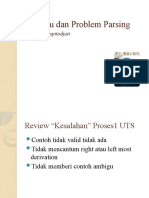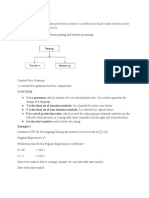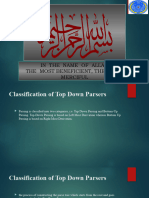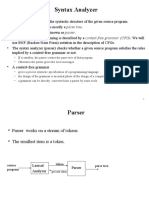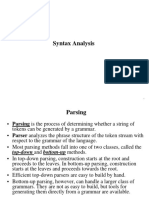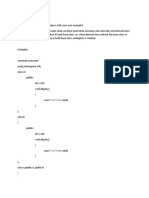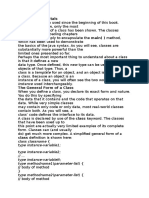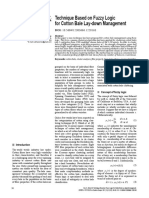0% found this document useful (0 votes)
19 views17 pagesCompiler Module 2 Important Questions
The document discusses left recursive grammar, providing definitions and examples of immediate and indirect left recursion, along with methods for eliminating them. It also covers the computation of FIRST and FOLLOW sets for a given grammar, error recovery strategies in parsing, and the concept of recursive descent parsing with an example. Additionally, it touches on non-recursive predictive parsing algorithms, left factoring, and the construction of parsing tables.
Uploaded by
blueyard38Copyright
© © All Rights Reserved
We take content rights seriously. If you suspect this is your content, claim it here.
Available Formats
Download as PDF, TXT or read online on Scribd
0% found this document useful (0 votes)
19 views17 pagesCompiler Module 2 Important Questions
The document discusses left recursive grammar, providing definitions and examples of immediate and indirect left recursion, along with methods for eliminating them. It also covers the computation of FIRST and FOLLOW sets for a given grammar, error recovery strategies in parsing, and the concept of recursive descent parsing with an example. Additionally, it touches on non-recursive predictive parsing algorithms, left factoring, and the construction of parsing tables.
Uploaded by
blueyard38Copyright
© © All Rights Reserved
We take content rights seriously. If you suspect this is your content, claim it here.
Available Formats
Download as PDF, TXT or read online on Scribd
/ 17








